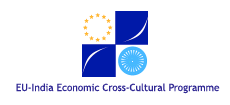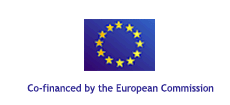Instituted by International Centre for Mechanical Sciences
Coordinated by Giampiero Mastinu (Technical University of Milan) and Massimiliano Gobbi (Technical University of Milan)
The course focused on the design of mechanical systems when suitable mathematical models are available establishing the relationships between the system's parameters and system's performance indexes.
Given the model, the designer is often charged with the hard task of finding "one optimal solution" by changing a number of parameters. The concept of "optimal solution" which has been presented in the course may be synthesised by stating that if more than one criterium (performance index) has to be satisfied by changing one or more parameters, the possible optimal solution constitute a set. This implies that the designer has to choose a preferred solution among those solutions - and only those - belonging to the set. As the solutions of the set are directly related to performance indexes, the task of the designer is to reason about performance indexes instead of reasoning about parameters. The methods and related computer programs that has been presented allow such a way of operation and of thinking. Multi-Objective Programming (MOP) is taken as the appropriate framework for the definition and solution of the addressed optimisation.
The course has been divided into two parts. In the first part some of the basic concepts of Optimisation Theory were presented. In the second part, a number of actual engineering problems referring to vehicle sub-system design were dealt with. The course was devoted both to experts wishing to acquire basic or advanced knowledge on Optimisation Theory, with special reference to Multi-Objective Programming, and to engineers specialist in the field of vehicle design.
Instituted by B.M. Birla Science Centre
Coordinated by A.S.R. Murthy (Indian Institute of Technology, Kharagpur) and B.G. Sidharth (B.M. Birla Science Centre, Hyderabad)
In the present day environment, the overall reliability of any system is significantly dependent on the reliability of the computer hardware and software embedded into the original configuration. The objective of this course was to highlight this phenomenon in the light of the increasing degree to which automation influences our daily lives, and to discuss recent trends in the relevant areas of technology.
The topics covered included: Reliability Definitions; Multi-State Devices; Failure Criteria; Bath-Tub Curve, Fundamentals of Probability; Markovian Models; Probability Distributions; Availability of Various Types of Reliability; Hardware and Software Reliability in Computers; Hazard Models; Series; Parallel and Combined Models; Redundancy Techniques; K out of N Systems; Reliability Evaluation Techniques; Fault Tree Analysis; Failure Mode Effects and Criticality Analysis; Reliability Allocation Procedures; Stress-Strength Interference Methods; Selected Software Reliability in the Models; Concurrent and Sequential Systems; Distributed and Stand-by Redundant Systems; Elements of Parameter Estimation in Software Reliability.
The course was addressed to practising engineers, researchers, managers and academics who have to deal with uncertainty in a quantifiable and comparable manner in their day-to-day working lives. Some mathematical background in matrices, differential equations and statistics was required while knowledge of set theory, probability, special functions and transforms was welcome. At the end of the course, some specific problems presented by the participants were discussed.
Instituted by International Centre for Mechanical Sciences
Coordinated by Nicolò Bachschmid (Technical University of Milan) and Paolo Pennacchi (Technical University of Milan)
On line diagnostics of rotating machinery during its normal operating conditions is increasingly required for safety reasons and for cost saving predictive maintenance accomplishment. Any diagnostic procedure is performed by analysing the dynamical behaviour of the machine, which is measured by suitable sensors in few accessible points, and by comparing it either with symptoms known from field experience and from literature (qualitative diagnostics), or with calculated results obtained by means of mathematical models of the system (model based quantitative diagnostics).
The lectures focused on following points:
1) Introduction on the dynamical behaviour of rotors (flexural and torsional critical speeds; unbalanced steady-state and transient response; balancing, forced motion due to different faults; self exited vibrations and instabilities).
2) Model of the system (the model of the rotating shaft; the model of the oil film bearing: fixed geometry bearings and tilting pad bearings, temperature effects, load loci and stiffness and damping coefficients, oil film instability, non linear effects; the model of the rolling element bearing; the model of the supporting structure).
3) Models of possible malfunctions (unbalance or blade loss; thermal or permanent bow of the shaft; rigid coupling misalignement; bearing misalignement, axial unsymmetries; cracks; rotor to stator rubbing; different kinds of instabilities).
4) Measurement and monitoring systems (sensors; signal analysis; features of commercial monitoring systems; acceptance regions and alarm levels; links to the diagnostics).
5) Different diagnostic methodologies (qualitative rule based diagnostics approach; quantitative model based diagnostic approach: identification of location, amount and phase of faults; description of two least square fitting approaches in the frequency domain: the force method and the displacement method).
Different experimental results, obtained on test rigs or on real machines were used for testing the least square fitting approach. Once the fault, its position and its amount have been identified, the dynamical behaviour of the rotor system could be simulated, and the results could be compared with the experimental ones. The lectures were directed to people involved in maintenance and control of rotating machines in power plants and petrochemical plants, and to researchers in the area of rotordynamics.
Instituted by B.M. Birla Science Centre
Coordinated by J.S.R. Subrahmanyam (Birla Institute of Technology, Ranchi) and K.V.K. Prasad (B.M. Birla Science Centre, Hyderabad)
The course focused on the design aspects of advanced computer system architectures with special emphasis on the choice of "Optimal Computer Architecture" best suited to a particular application. Typically, the broad spectrum of applications encompassing-servers for networking (Database / Web servers in particular), fault tolerant architectures for real-time mission-critical situations and high-end systems for scientific research, AI & Multimedia applications are considered.The critical design issues in connection with instruction scheduling & branch prediction, memory usage, cache strategies, multi-processing, Y2K compliance etc., particularly with a view to improve the CPU and I/O performance are discussed with specific case studies.
The course was formulated to address the advances in computer architectures handling some critical design issues related to the above applications. The specific topics covered included:
1) Historical perspective, classification of advanced computer architectures, overview of the associated hardware.
2) Super-micro system architectures, 32 and 64 bit microprocessors, RISC processors, workstation architectures, case studies of high-end microprocessors and workstations; parallel processing systems.
3) Graphics and multimedia system architectures; embedded system architectures (including transputers).
4) Advanced cache implementation strategies; advanced instruction sets and branch prediction strategies.
5) Computers for networking and computer network architectures; fault tolerant computing architectures.
6) Computers for special applications - Case studies of computers for high reliability applications, AI applications, miscellaneous control & other real time applications.
7) Communications processing, very large database applications etc., year 2000 implications of computer architectures.
8) Performance evaluation, models, simulation. The future prospects in the area of Advanced Computer Architectures for the new millenium are also discussed.
The course was devoted to experts wishing to acquire advanced knowledge in these areas, for benefiting them to carry out further research, project planning for advanced systems and projects and advise the industry, researchers and academia appropriately.
Instituted by International Centre for Mechanical Sciences
Coordinated by Pierluigi Crescenzi (University of Florence) and Stefano Leonardi ("La Sapienza" University in Rome)
The course focused on the study of the inherent complexity of optimization problems and on the design and experimentation of heuristics for their efficient approximate solution.
In many practical applications of computers (for example in the areas of logistics, scheduling, optimal vehicle routing, facility location problems etc.) we need to solve problems that are known to be computationally intractable due to their inherent complexity. In order to approach these problems a large body of approximation algorithms has been provided by the specialists. In particular various heuristic techniques have been proposed, such as local search, greedy techniques, dynamic programming based heuristics, approximation schemes. More recently other heuristic techniques based on new programming concepts such as simulated annealing and genetic algorithms have been proposed and their performance has been compared with the performance of more traditional heuristics. The course was devoted to the study of the inherent complexity of optimization problems and to the design of approximation algorithms and heuristics for their efficient solution.
Special attention was devoted to the solution of on-line problems, in which a sequence of requests must be served optimally without having a complete knowledge of what the future requests will be. The programme of the course was the following:
Optimization problems and their complexity; Examples and applications in resource management; Approximate solution of complex problems; Basic techniques for optimization problems: exhaustive algorithms, sequential algorithms, greedy algorithms, dynamic programming, local search; Approximation algorithms and approximation schemes; Examples of non approximable problems; Randomized algorithms; Other heuristic techniques; On line algorithms and analysis of their competitiveness; Applications to scheduling problems.

